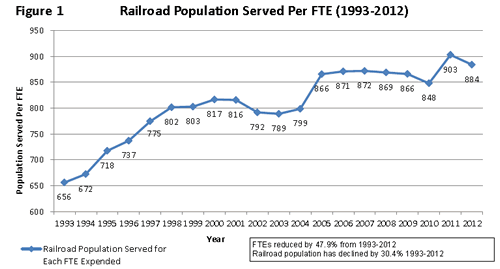We have two comprehensive strategic priorities for this planning period: Customer Service and Trust Fund Stewardship.
Our Customer Service priority is focused on meeting our customers' expectations for timely personal service. These expectations are based on past experience and performance, as reflected in several independent customer satisfaction surveys over the past decade. Our challenge in meeting this priority will be to make the most of our limited resources, using technology and staff in cost-effective ways. Another challenge will be the rising expectations of our customers, reflected in increased demands for new and improved services. We will strive to meet these expectations in this planning period.
Our Trust Fund Stewardship priority has several different aspects, including accurate benefit payments, a focus on financial solvency for our programs for the future and maintaining a high level of program integrity.
To ensure the accuracy of our benefit payments, we will continue to identify areas where potential errors may occur and pursue automation initiatives that will minimize erroneous payments.
Future solvency was a major objective of legislative changes to the RRA in 2001. Those amendments, contained in the Railroad Retirement and Survivors' Improvement Act, created the NRRIT, a non-governmental entity that is charged with managing investment of the railroad retirement trust funds in a wide variety of financial instruments. Although this responsibility was shifted from the RRB, the agency still has the responsibility of monitoring the activities of the NRRIT and working with the NRRIT to ensure the availability of funds for benefit payments.
Program integrity involves managing our budgetary resources in a prudent, responsible way to ensure that customers receive those benefits to which they are legally entitled. To do this, we conduct automated reviews of our customers' benefit information to identify errors or inconsistencies, and maintain computer matching agreements with other agencies and entities that report information on, or pay benefits to, our customers. We also safeguard our trust funds through such administrative activities as using competitive procurements whenever possible, increasing energy efficiency in our headquarters building, developing in-house training programs to better equip our employees to handle a variety of challenges and using online video to present both internal and external training. We also work closely with our Office of Inspector General (OIG) to have our financial statements audited every year. All of these activities will continue during this planning period.
A key factor in meeting our strategic priorities is the RRB's administrative funding level. Budgetary resources have been tight in recent years, and are expected to remain so during the planning period. To deal with this challenge, the agency has made creative use of technology and other innovations, not only to maintain service levels, but to improve agency performance wherever possible.
The following figure demonstrates how the RRB has done more with less in recent years. The general trend over the last 19 years has been an increase in the ratio of customers served to agency employees. The major reasons the RRB has been able to maintain high performance levels with increasingly scarce resources are our extremely capable and dedicated employees coupled with expanded use of technology. However, the continued loss of personnel through retirements, and ongoing budget restraints, has created a serious challenge for the future, to be addressed during the planning period.
